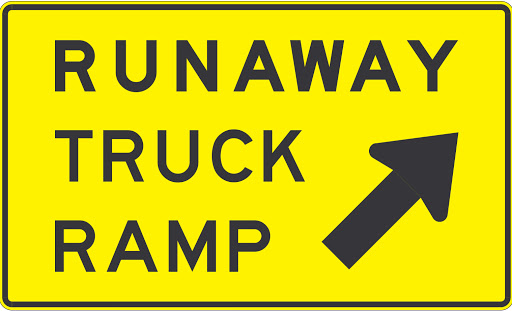Transportation Defined: Truck Escape Ramps
Transportation Defined: Truck Escape Ramps

Unless you drive a big rig, truck escape ramps probably aren’t something you think of too often...
But, you are a reader of the ADOT Blog, which means you're the sort of inquisitive person whose curiosity demands to know what things are and how they work. So, about those truck escape ramps…
There are two primary types – gravity ramps and gravel arrester beds.
A gravity ramp works essentially like this: a truck takes the ramp and experiences an uphill grade that naturally will stop the truck.
A gravel arrester bed works in a completely different way, but the goal is the same. This ramp is on a flat-level grade. Trucks will take the ramp and run into a bed that’s full of small, round gravel. The friction from the wheels going through the gravel is what slows the truck down to a stop.
An ADOT roadway design manager explains that the type of ramp used depends on the spot in which it is being built.
Ramp or no ramp
Roadway design guidelines help engineers decide whether or not a truck escape ramp is necessary at a certain location. But other factors are looked at, too, including the grade of the highway and whether or not there are curves or a stop at the end of the grade. Observation also plays a part – if ADOT district employees, DPS officers or truck drivers notice a lot of the big trucks are experiencing hot brakes at a certain location, an escape ramp may be considered.
Getting out
Trucks typically can maneuver off the gravity ramp fairly easily, but because the gravel arrester beds are pretty deep, a towing vehicle has to pull trucks out of those.
There are service roads next to the ramps, so a tow truck can drive alongside and get into position. There also are concrete anchors spaced along the service road that assist with towing the vehicle out of the gravel arrester bed.
One more thing
We thought maybe you’d like an explanation of why these ramps are necessary in the first place. Here’s the answer, according to ADOT’s Roadway Design Guidelines:
The combination of heavy trucks and steep highway downgrades presents a potential safety hazard... Defective or incorrectly adjusted braking systems on trucks or trailer, among other things, can contribute to brake overheating and failure resulting in the driver's inability to control vehicle speeds on downgrades.
Truck escape ramps offer an opportunity for out-of-control trucks to exit the highway and come to a controlled stop.
But we can’t forget…
Brake check areas are just as important as the truck escape ramps. You’ll find these areas at the top of a summit or just ahead of a long downhill grade – they give truck drivers the chance to check their brakes before heading down.
Transportation Defined is a series of explanatory blog posts designed to define the things you see on your everyday commute. Let us know if there's something you'd like to see explained ... leave a comment here on the blog or over on our Facebook page!
